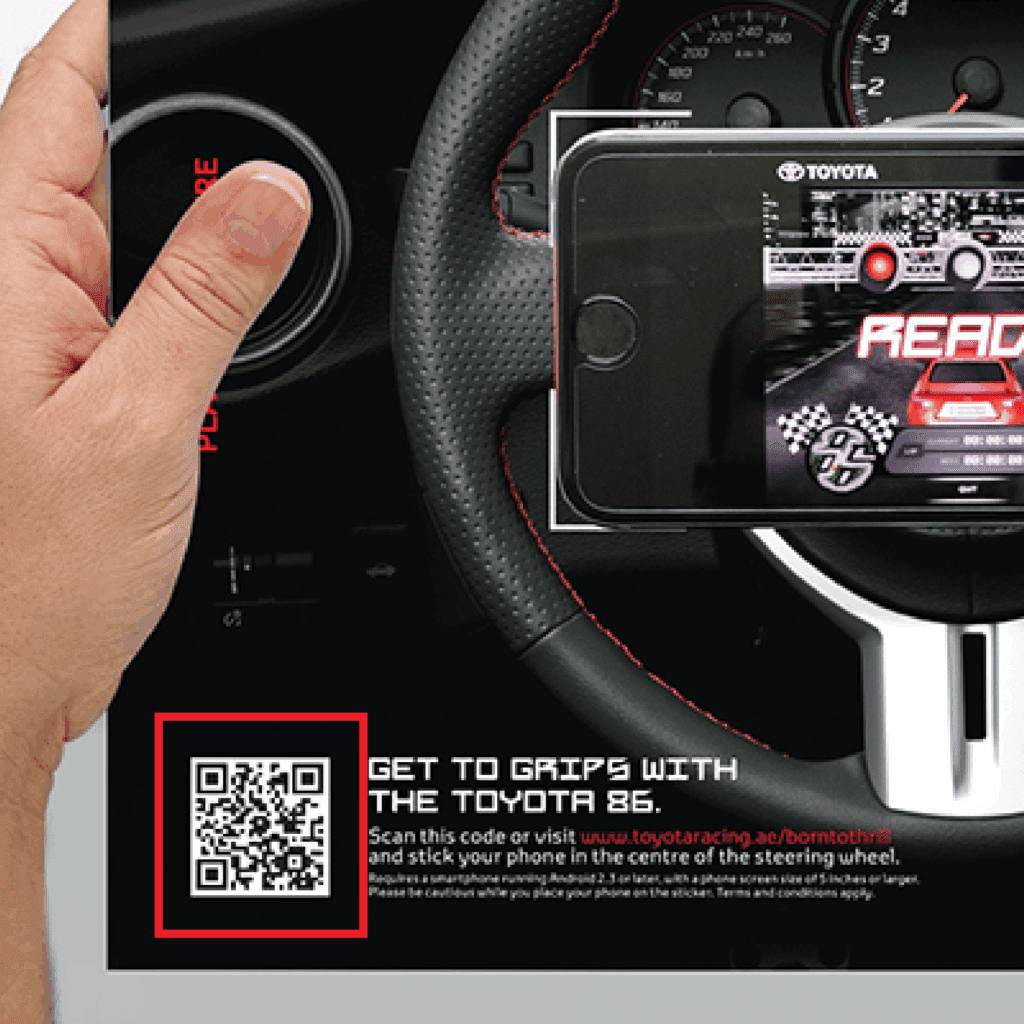Augmented reality powered business cards by CM&D are a great way to help your brand stand apart. And by leveraging WebAR to bring interactivity to your business card, or other print materials, your audience no longer has to rely on downloading an app before enjoying your latest immersive experience. Web-based augmented reality runs directly over the web browser on any mobile device newer than an iPhone 6 and runs on all major web browsers.
How does WebAR work?
Leveraging the power of WebAR only requires three simple things. You need an AR trigger, a unique URL and some fresh digital content.
An augmented reality trigger or marker can be any symbol, a line of text, a shape, or sign that tells the device what it is looking at. These markers can be almost anything! They could be as complex a 3D object like an alarm clock or a new car, or as simple as your company’s logo. AR triggers tell someone’s device what it’s looking at and in turn tell that phone or tablet where to go on the internet. The simplest example, and the one we recommend the most, is a QR code. After much hype years back, QR codes are seeing a resurgence in popularity and are recognized by most consumers as a CTA. Also worth noting, all major mobile devices now read QR codes automatically using their camera. By leveraging QR codes, you can reduce required user ‘taps’ to just two, in order to experience the latest in WebAR. One tap to open the camera, and a second to launch the experience.

WebAR, as the name suggests, lives on the internet. In order to leverage the power of this technology, you will also need to set up a specific URL or landing page to host the content you want to share. These websites or landing pages can be hosted on your own internal server or hosted with a partner server like AWS. One of the great things about web-based augmented reality versus app based AR, is that this content now lives on your website! No longer do your users have to download an app to view your latest digital experience or go to a third party site like Snapchat, Facebook or Instagram to enjoy augmented reality. Companies like Apple and Google have been working on this technology for years to help bring it to the public, and now it’s here.

Lastly, you’ll also need the digital content you want to share with your audience. With WebAR you can trigger any number of different types of content. Basically, the sky’s the limit! Launch your latest YouTube video, include direct links to your social media channels, ad interactive 3D models, animations, contact forms, or even holograms! There are a couple of things you need to keep in mind when considering WebAR when it comes to your creative, the most important thing being your experience needs to run smoothly over the internet both fast and slow internet connections. Making sure your content is optimized for web distribution is very important. This can be a little bit tricky with 3D models and animations, so you may want to reach out to an expert and get some help on understanding the latest best practices in web optimization for interactive content. Otherwise, you should be good to go assuming you compress and optimize your content properly.

Why consider using WebAR?
Everybody knows that pictures are more valuable than words and video is more valuable than pictures… And now, interactive content is more valuable than video! Leveraging technology like WebAR to add interactivity to your marketing or promotional materials, can add multiple benefits to your advertising dollar. Not only will your company be looked at in a forward-thinking and innovative light, this type of content can help your brand stand out among the competition.
Augmented reality can also help add real value to static materials like print, magazine ads, posters and more. Think about handing someone a product catalog that includes fully interactive product demos on every page! That sounds like a pretty cool value-add to me.

Lastly, it has been proven that AR content has significantly higher engagement rates, longer user interactivity times and is more likely to be shared when compared to traditional static content (including video). Augmented reality is still fairly new, and does take a little extra time to get right, but the benefits can be significant when executed properly.
Augmented reality has been a hot topic for years in the media industry. And WebAR could be the technology that finally pushes adoption over the edge. WebAR eliminates the need for mobile apps, it is platform and browser agnostic (AKA it runs on pretty much all mobile devices and on all web browsers), and it lives on your website. WebAR has the power to bring interactivity augmented reality to the masses, what could you do with it?


